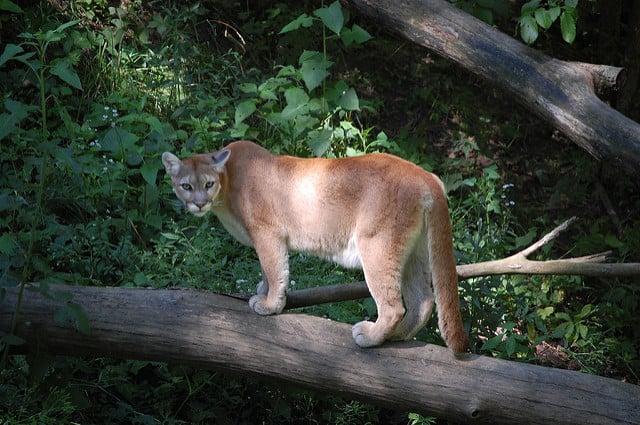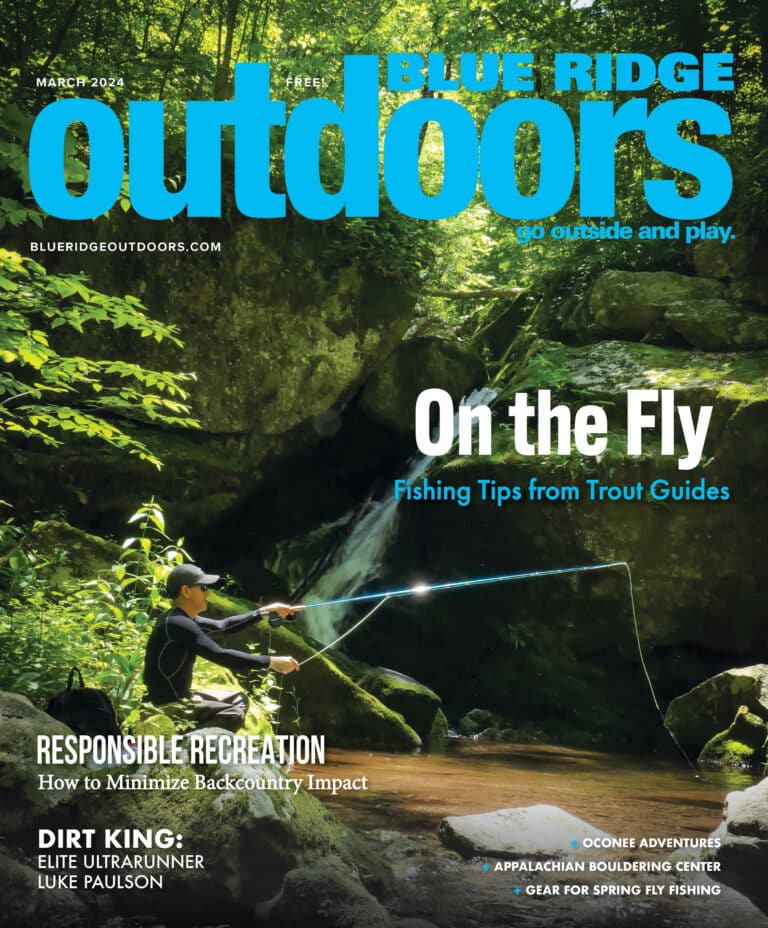Diana Marchibroda and her miniature schnauzer froze in their tracks when the mountain lion stepped out of the woods last May. For a solid four seconds, Marchibroda watched as a large, sleek cat standing about three feet tall with a long, curled tail crossed Skyline Drive near Gavel Springs Gap less than 100 feet in front of them. Neither Marchibroda nor her canine hiking companion made a peep, and as soon as the cat caught sight of its awe-struck onlookers, it scampered back into the woods, swift and silent.
“I saw a mountain lion, and that’s just the way it is,” said Marchibroda, a dentist in her 60s living in Afton, Virginia. “It was great, probably one of the most exciting experiences of my life, and I feel very fortunate.”
Heart still pounding, Marchibroda tracked down a ranger near Mathews Arm Campground to report what she had just witnessed. A seasoned hiker who’s lived in Virginia since the 1970s and is deeply familiar with the area’s wildlife, she’s confident in what she saw. Others, including the park ranger she met that day and wildlife experts she’s reached out to since the sighting, are skeptical.
“They had their minds set and there was nothing that was going to change their minds. Even with all these numerous sightings they still dug their heels in, and that was pretty frustrating,” she said of the officials at agencies like the U.S. Fish & Wildlife Resource. “They initially didn’t want to admit that I saw one, and they were calling it a UFO—an unidentified furry object. I really took offense to that.”
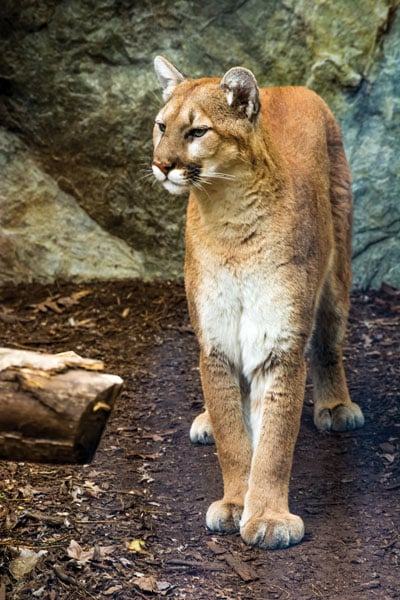
Cougars used to roam the entirety of North America, making the mountain ranges, woodland forests, and river corridors from coast to coast their homes. But European colonization essentially extirpated the cats from about two thirds of their habitat in the U.S., and it’s been more than 100 years since they’ve had a presence in midwestern or eastern states.
For decades, the chances of coming across one of these big cats in an eastern state were slim to none, and much to the chagrin of residents like Marchibroda who have reported sightings, the U.S. Fish and Wildlife Service removed eastern subspecies of cougars from the endangered species list last year and declared them extinct.
But recent expert-confirmed sightings—which have involved photographs, videos, and DNA—in Tennessee support a theory that mountain lions, whose populations out west have continued to expand, are slowly making their way back to this side of the country. Biologists and wildlife specialists speculate that cougars will reestablish themselves in states like Kentucky, Tennessee, and Virginia within the next 25 to 50 years.
Endangered or Extinct?
“My first thought was, ‘I gotta chase this thing,’” Marchibroda said. “And then my second thought was ‘No, maybe not.’”
Marchibroda wasn’t under any illusions that she could catch or in any way interact with the mountain lion she saw on her hike. But she was familiar with (and disturbed by) the U.S. Fish & Wildlife Resource’s recent decision to declare eastern cougars extinct, and she knew unless she was able to produce some sort of physical evidence like a photo, she’d be hard pressed to convince any wildlife expert of what she saw.
“The animal has been determined extinct, and that’s just a shame,” she said. “And that’s being done without, from what I understand, any real proof. How did they know this isn’t an eastern lion? They don’t know that, they’re not genetically testing these animals.”
One of her biggest concerns about the recent declaration of extinction is that any cats in the area (whether western migrants or otherwise) and their habitats wouldn’t be protected. But according to University of Minnesota research associate and wildlife expert Dr. Michelle LaRue, it’s a little more nuanced than that.
“Eastern cougars are not a distinct species genetically. If for some reason there were any cougars rediscovered in the east that weren’t migrants from the west, the protection status is up to the state in which it is found,” LaRue said. “However, it is pretty well accepted that there are no cougars living in the east currently.”
One of her biggest concerns about the recent declaration of extinction is that any cats in the area (whether western migrants or otherwise) and their habitats wouldn’t be protected.
Like a number of other people in her community—a hunter who caught the tail end of a cat on his deer cam and a Presbyterian minister in Batesville whose neighbor saw one drinking out of a pond, to name a couple—Marchibroda knows that she saw a mountain lion, and she wants state and national wildlife agencies to take these sightings seriously. There are “just too many of these stories” for her to believe that the cats are extinct.
“These are believable people,” she said. “This isn’t just hearsay.”
From a wildlife biology perspective, though, it’s going to take more than a story—no matter how convincing it may be—to determine whether these cats are there and where they’re coming from.
You’re on Camera
Despite the widely-held belief in the scientific community that eastern mountain lions have been long gone and any cats seen roaming the region these days must have made the long trek from midwestern states like South Dakota, some Appalachian residents remain convinced that the cats never actually left the area.
In November of last year, a giant cat with a long tail wandered in front of Tennessee resident Austin Burton’s deer camera on his family’s farm in Humphreys County. The Tennessee Wildlife Resource Association (TWRA) confirmed that the cat, which sniffed around on the ground and in a low-hanging tree branch before looking square into the camera with its mouth wide open, was in fact a mountain lion. News outlets picked up the story and the video went viral, and it’s easy to understand why—according to TWRA regional manager Alan Peterson, that video marked only the second confirmed cougar sighting in Tennessee in more than 100 years.
“For years everybody in every state wildlife agency has gotten reports of sightings, but we had never had anything in Tennessee that we could really verify as a cougar,” Peterson said.
The video appeared only weeks after the first ever sighting confirmed by the TWRA since its founding in 1974, when a trail cam in Obion County snapped a photo of what biologists suspected was a young male cougar.
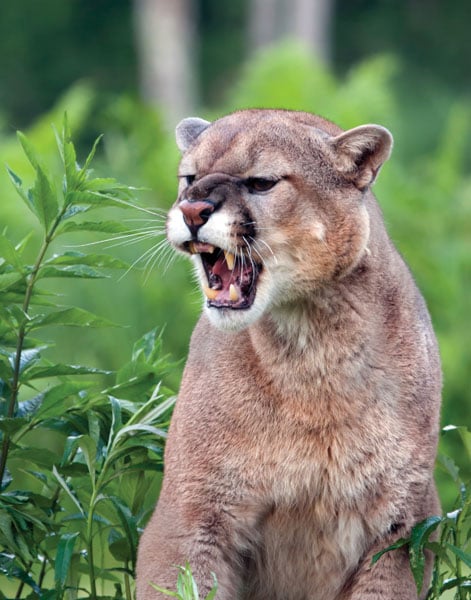
Photos are difficult to confirm, Peterson said—the process involves sending wildlife experts to the exact spot where the cat was allegedly seen to take another photo in order to compare it to the original and verify the location. They then have to ensure that the picture hasn’t been tampered with in any way, because Peterson said an astounding number of people—both misinformed wildlife enthusiasts and tricksters with too much time on their hands and access to Photoshop—send him shots of mountain lions that were clearly either edited or taken in a state out west.
“TWRA has had their collective heads up their cloacas for a very long time in denial of these sitings [sic] and reports,” reads a comment on a December 2015 article about the video footage. “Why do they believe it now? Is it a change in the regime their [sic]? Oh maybe some of the lazy hacks have finally retired.”
Another commenter speculated that the agency may have intentionally downplayed past sightings “as they result in new study and staffing expenses.”
Peterson said he understands the excitement around the idea of crossing paths with a mountain lion, but nearly all of the photos and videos he receives are not what they seem.
“There are a lot of instances of someone trying to mess with us, or they’re messing with a buddy, and the buddy sends it to us thinking it’s real,” he said. “Most of the time we can find the original photo on the internet where it was taken out west or wherever. It has to be a good, clear photo, and we get all kinds of fuzzy stuff that could be a bobcat, could be a yellow lab, but it’s so far away or so fuzzy we can’t tell.”
So these sightings have been confirmed, and there is in fact at least one mountain lion roaming around in Tennessee. Then what?
“Well, then we know there’s a cougar there,” Peterson said simply. “We’re not taking any action to move them or kill them. We know there’s at least one there, and if we get reports of a cougar causing damage then there’s a possibility we’ll need to investigate that. We have no intentions, but if they show up, they show up.”
Cross-Country Cats
When Dr. Michelle LaRue began her graduate studies in 2005, the state of Nebraska had virtually no mountain lions. Now, the Nebraska Game and Parks Commission estimates that the population has reached at least a couple dozen.
“What I set out to do was figure out habitat stability and dispersal corridors into the midwest,” said LaRue, a research assistant in the earth sciences department at the University of Minnesota who studies mountain lions. “For about 15 years there were handfuls of confirmations that showed up in the midwest. Every year there were a few here and there.”
They exclusively populated western states for decades, but according to LaRue, some shifts in hunting regulations began to change things about 50 years ago: lions were switched from the bounty hunter category to a game species managed by the states.
“Managing them in that way allowed for populations to rebound, and that’s what we think is fueling the dispersal. The populations are doing well enough in the west that when young males get old enough, they don’t have anywhere to go,” she said. ”All the territories are basically taken up so they have to go somewhere else, and somewhere else happens to be the Midwest.”
In 2012, LaRue and her colleague Dr. Clay Nielsen published a paper in the Journal of Wildlife Management analyzing 178 confirmed sightings between 1990 and 2008 throughout the Midwestern and Eastern states and parts of Canada. The data they have collected over the years indicates that cougars are gradually making their way eastward, and validated the theory that young males travel farther and more quickly than females, making the repopulation process a gradual one.
According to LaRue and her research, lions recolonize by stepping stone dispersal, which essentially means they start traveling, find a nice habitat to set up shop for a little while, then move on to the next area with a suitable habitat—and they’ll do this for hundreds, even up to thousands of miles. It’s a gradual process, and especially in the early years of a repopulation, any sightings are most likely of males.
“We were really focused on the males, because obviously they can’t ensure populations with just males,” LaRue said. “Females need to show up. But the thing about mountain lions is that females don’t travel as far or as often, and when they disperse they don’t go very far or very well.”
Female cougars will raise a litter of kittens up until the age of about 20 months, LaRue explained, and then the young cats are “kind of kicked out and left on their own.” The males, especially, are forced to disperse away from the family, partly to avoid inbreeding, and partly because male cougars are territorial and won’t tolerate any other males in their domain.
“Male cougar territories are pretty big, and that’s why they have to disperse farther than females,” LaRue said. “When a female kitten gets big enough, she doesn’t have to go very far, because nobody’s kicking her in the butt to get far away.”
The cougars wandering far from their original homes in the West are, naturally, searching for three things: habitat, food and mates. The Midwest can offer two of the three, but the males don’t have much luck repopulating the area on their own. Females have gradually made their way into states like Nebraska, South Dakota, Arkansas, and Missouri, but according to LaRue, it turns out the midwest “largely is not a great habitat.” So it’s not unreasonable to assume that they’ll continue on and eventually end up in states near and on the eastern seaboard, where lush mountain ranges like the Blue Ridge and Smokies offer prime habitat and sustenance (deer, primarily) for the cats. But even when a new population does begin to grow, LaRue said the likelihood of crossing paths with them will still be miniscule.
“They prefer habitats where it’s difficult for people to go,” LaRue said. “They like rugged terrain with forest cover. Because of how they hunt, they need to basically be able to hide and creep up on their prey. Being in a residential neighborhood does nothing for a cougar.”
So will a new population of cougars render the U.S. Fish and Wildlife Service’s declaration of extinction moot? That might depend on who you ask, but LaRue, who’s been studying mountain lions for more than a decade, isn’t convinced that eastern cougars were ever any different from the western subspecies. Her views represent another twist in the ecological controversy.
“Last year the U.S. Fish & Wildlife Resource declared the eastern cougar extinct,” LaRue said. “I don’t really know why, because I don’t really think it ever existed.”
She believes that North American mountain lions—including the Florida panther, which she said is protected because “they are considered a distinct population segment via the Endangered Species Act”—are essentially all the same, without enough genetic distinctions to justify differentiating the western and eastern subspecies.
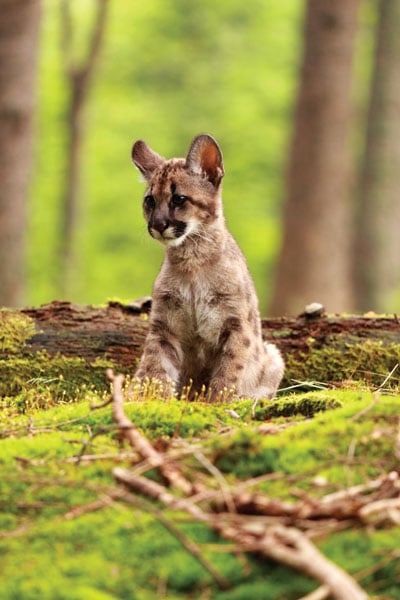
“I’m of the opinion that there really never was a big difference between the eastern cats and what’s in existence now,” she said. “I think it’s all the same.”
And she’s not alone in that belief. Virginia Department of Game and Inland Fisheries district wildlife biologist David Kocka is of the same mindset.
“I’m not a mammalogist, so I’m not going to try to play their role, but I think they’re all the same,” Kocka said, adding that differentiating between subspecies may not always be a worthwhile effort. “There are at least 10 different subspecies of white-tailed deer, and it doesn’t make a bit of difference in the grand scheme of things.”
Looking Ahead
As for what a new population of mountain lions would mean for nearby residents, education is crucial.
“The amount of area they need for their home range, the kinds of things they eat, their behaviors—all of that is really important to arm ourselves with so we have that information,” LaRue said, adding that with that education comes the dispelling of myths. “They don’t go after dogs and cats or people. They prefer deer.”
LaRue is the first to admit that she’d love to see a mountain lion in the wild, and she of all people understands the fascination with them. But she’s also realistic.
“The likelihood of seeing one is incredibly rare, let alone interacting with them,” she said. “I have friends in Wyoming and Montana, where mountain lions have always been. They go hiking in the Rockies all the time and people still don’t see them very often.”
Experts in Tennessee don’t know exactly how many mountain lions are roaming the area, but they do know one thing for sure: at least one of them is a female.
Kocka, who predicts that he’ll be retired long before cougars establish a population in Virginia, said “it will change things.”
“There will be dynamics that people have no concept of,” he said. “We’ll deal with a lot of the same stuff that’s related to bears in Virginia. A lot of people don’t know they’re around until they show up and start feeding on their bird feeders, and then all of a sudden it’s ‘What are you gonna do about these bears?’”
He envisions calls from parents, too afraid to send their kids out to the bus stop knowing there’s a mountain lion within miles of the area.
“Well, then don’t dress them up like sheep,” he said with a chuckle. “But really, it’ll change people’s viewpoints at some point.”
Luck be a Lady
Experts in Tennessee don’t know exactly how many mountain lions are roaming the area, but they do know one thing for sure: at least one of them is a female. Last November a bow hunter reported to the TWRA that he had shot a cougar in Carroll County. (Shooting a mountain lion is illegal in Tennessee, given that there’s no hunting or trapping season for the animal, but Alan Peterson said the hunter didn’t believe he’d mortally wounded the animal, and the case has been turned over to a District Attorney’s office to determine whether or not the hunter will be charged.)
Blood samples from the arrow revealed that the cat had originated in South Dakota—and that it was a female. Which could be a pretty big deal, because up until now, the confirmed sightings in the east have been of male cats.
“In the subsequent photos we’ve gotten of cougars, there wasn’t any evidence of any kind of wound or anything on it,” Peterson said. “So we’re assuming there are at least two different animals, one that was hit by an arrow and one that wasn’t.”
There’s no guarantee that cougars trekking from South Dakota will stick around, or that the female in Tennessee will have kittens. But these cats are on experts’ radars, and the TWRA has even established a Cougar Response Committee to answer questions and sift through reported sightings—of which Peterson said he expects to see an influx later in the year.
“If they’re still around here, during deer season, I’m assuming we’ll get more pictures from trail cameras,” he said. “Then we’ll try to figure out what kind they are and get more evidence.”
